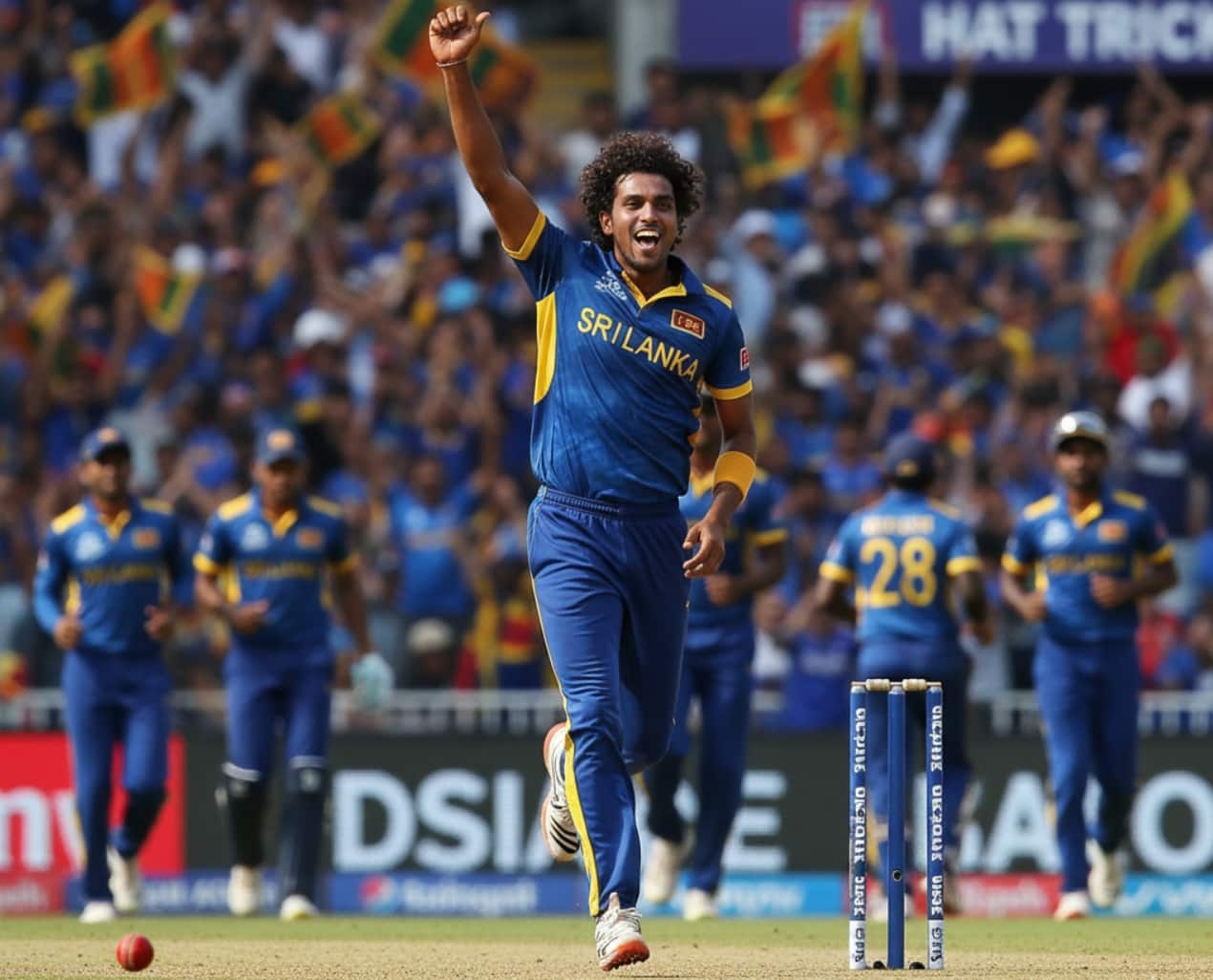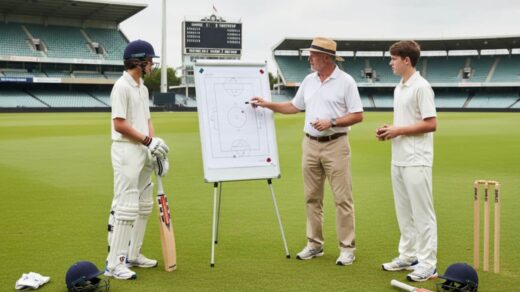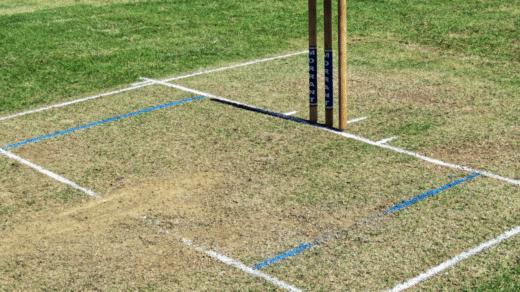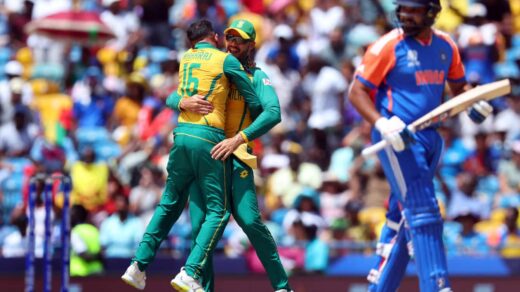Cricket is full of magical moments that leave fans speechless. From stunning catches to explosive batting, the game offers endless excitement.
But some of the most thrilling moments come from bowlers who create history with their skill and precision.
A hat-trick – three wickets in three consecutive balls – is already a rare achievement that cricketers dream about.
But there’s something even more extraordinary: the double hat-trick. Only a handful of bowlers in cricket history have achieved this incredible milestone.
So, how many wickets constitute a double hat-trick? The answer is simple yet fascinating: four wickets in four consecutive deliveries.
How Many Wickets Constitute A Double Hat-Trick?

This article explores everything you need to know about this rare bowling feat, the legends who achieved it, and why it remains one of cricket’s most difficult records.
For more cricket insights, records, and expert analysis, visit Cricket Bureau – your trusted source for everything cricket!
What is a Double Hat-Trick?
A double hat-trick happens when a bowler dismisses four batsmen in four consecutive legal deliveries. It extends the traditional hat-trick by one more wicket, making it exponentially harder to achieve.
Let’s break it down simply:
- Regular Hat-Trick = 3 wickets in 3 consecutive balls
- Double Hat-Trick = 4 wickets in 4 consecutive balls
That one extra wicket might not sound like much, but it makes the achievement incredibly rare. The bowler must maintain perfect focus, execute flawless deliveries, and overcome immense pressure for one additional ball.
Think about it: after taking three wickets in a row, the entire stadium is watching. The pressure is massive. The batsman coming in is nervous but also determined not to become the fourth victim. This is what makes the double hat-trick so special.
Unlike a regular hat-trick, which happens occasionally in international cricket, a double hat-trick is so rare that only six bowlers have ever achieved it in recognized international matches.
How Does a Double Hat-Trick Happen?
A double hat-trick requires perfect execution across four consecutive legal deliveries. Here’s what needs to happen:
The Sequence:
- Ball 1: First wicket (could be bowled, caught, LBW, etc.)
- Ball 2: Second wicket
- Ball 3: Third wicket (hat-trick complete!)
- Ball 4: Fourth wicket (double hat-trick complete!)
Important Points:
- All four deliveries must be legal (no no-balls or wides)
- The wickets can span across overs or even innings in Test cricket
- The bowler must take all four wickets themselves (run-outs don’t count)
- Each dismissal must be consecutive – no runs or dot balls in between
Real Example: Lasith Malinga vs South Africa (2007)
In the 2007 World Cup, Malinga bowled one of cricket’s most famous spells. He dismissed:
- Shaun Pollock (caught)
- Andrew Hall (bowled)
- Jacques Kallis (caught)
- Makhaya Ntini (bowled)
Four wickets in four balls! South Africa went from cruising to collapsing in seconds. Though they narrowly won, Malinga’s spell became legendary.
The Rare Club of Double Hat-Trick Bowlers
Throughout cricket history, only six bowlers have accomplished this extraordinary feat. Here’s the complete list:
| Player | Country | Year | Opponent | Format | Venue | Figures |
|---|---|---|---|---|---|---|
| Lasith Malinga | Sri Lanka | 2007 | South Africa | ODI | World Cup | 4/13 |
| Lasith Malinga | Sri Lanka | 2019 | New Zealand | T20I | Pallekele | 5/6 |
| Rashid Khan | Afghanistan | 2019 | Ireland | T20I | Dehradun | 5/27 |
| Curtis Campher | Ireland | 2021 | Netherlands | T20 WC | Abu Dhabi | 4/26 |
| Jason Holder | West Indies | 2022 | England | T20I | Barbados | 4/7 |
| Waseem Yaqoob | Lesotho | 2024 | Mali | T20 Qualifier | Gaborone | 6/18 |
| Hernan Fennell | Argentina | 2024 | Cayman Islands | T20 Qualifier | Buenos Aires | 4/19 |
As you can see, most double hat-tricks have happened in T20 cricket, where bowlers often bowl in clusters and batsmen take more risks. Only Malinga’s 2007 feat came in ODI cricket, making it even more special.
Lasith Malinga – The Pioneer of Double Hat-Trick
Lasith Malinga holds a unique place in cricket history as the only bowler to achieve a double hat-trick twice!
First Double Hat-Trick (2007 World Cup vs South Africa):
This remains one of the World Cup’s most dramatic moments. Sri Lanka was defending 209, and South Africa was cruising at 206/5, needing just 4 runs to win with 5 wickets in hand.
Then Malinga struck with his deadly yorkers:
- Ball 1: Shaun Pollock caught at slip
- Ball 2: Andrew Hall bowled
- Ball 3: Jacques Kallis caught behind
- Ball 4: Makhaya Ntini bowled
Four wickets in four balls! From 206/5 to 206/9 in seconds. Though South Africa won by 1 wicket, Malinga’s spell became immortal.
Second Double Hat-Trick (2019 vs New Zealand):
Twelve years later, at age 35, Malinga did it again in a T20I match! He dismissed Hamish Rutherford, Colin Munro, Ross Taylor, and Tom Bruce in consecutive deliveries, finishing with incredible figures of 5/6.
Why Malinga Was Special:
- Unique sling-arm action that confused batsmen
- Mastered the yorker like no one else
- Perfect death-over specialist
- Could swing the ball at high pace
Malinga’s two double hat-tricks cement his legacy as one of cricket’s greatest bowlers.
Other Legendary Double Hat-Trick Achievers
Rashid Khan (Afghanistan) – 2019 vs Ireland
The Afghan leg-spinner became the first to achieve a double hat-trick in T20I cricket. Playing against Ireland in Dehradun, India, Rashid took four wickets in four balls:
- Kevin O’Brien (caught)
- George Dockrell (LBW)
- Shane Getkate (LBW)
- Simi Singh (LBW)
He finished with 5/27, helping Afghanistan dominate the match. Rashid’s googly and variations were too much for the Irish batsmen.
Curtis Campher (Ireland) – 2021 T20 World Cup
In the biggest tournament, Campher achieved the unthinkable against the Netherlands. His victims were:
- Colin Ackermann (caught)
- Ryan ten Doeschate (LBW)
- Scott Edwards (LBW)
- Roelof van der Merwe (bowled)
Campher became the first to take a double hat-trick in a T20 World Cup, finishing with 4/26 and turning the match completely.
Jason Holder (West Indies) – 2022 vs England
The West Indies captain delivered when it mattered most. In the final over, needing to defend 20 runs, Holder took four consecutive wickets:
- Chris Jordan (caught)
- Sam Billings (caught)
- Adil Rashid (bowled)
- Saqib Mahmood (LBW)
West Indies won by just 4 runs in a thrilling finish. Holder’s spell showed the captain’s courage under pressure.
Waseem Yaqoob (Lesotho) – 2024 Africa Qualifier
In a relatively unknown match that produced an extraordinary performance, Yaqoob demolished Mali’s batting. His double hat-trick victims were:
- Amara Nimaga
- Dramane Berthe
- Mahamadou Malle
- Yacouba Konate
He finished with stunning figures of 6/18 in 4 overs, helping Lesotho bowl out Mali for just 36 runs while defending 148.
Hernan Fennell (Argentina) – 2024 Americas Qualifier
The most recent member of this elite club, Fennell, achieved his double hat-trick against the Cayman Islands in the ICC Men’s T20 World Cup Sub Regional Americas Qualifier, finishing with 4/19.
Why is a Double Hat-Trick So Rare?
Despite thousands of international cricket matches played over 150 years, only six bowlers have achieved a double hat-trick. Here’s why:
1. Exceptional Skill Required
- Bowler must execute four perfect deliveries
- No room for error in line, length, or pace
- Must adapt to different batsmen instantly
2. Mental Pressure is Immense
- After three wickets, everyone’s watching
- The new batsman knows the situation
- One bad ball ruins the record
3. Perfect Timing Needed
- Right match situation (batting team taking risks)
- Favorable pitch and weather conditions
- Batsmen making mistakes under pressure
4. Element of Luck
- Catches must stick
- LBW decisions must go your way
- Batsmen might play rash shots
5. Limited Opportunities
- Most bowlers never get three wickets in a row
- Getting the fourth is exponentially harder
- Shorter formats give more chances but also more pressure
Compare this to regular hat-tricks, which happen occasionally. A double hat-trick is approximately 10 times rarer than a hat-trick!
Significance and Impact of a Double Hat-Trick
When a bowler takes four wickets in four balls, the entire match changes instantly. Here’s the impact:
Game-Changing Momentum:
- Turns winning positions into losing ones
- Creates panic in the batting team
- Energizes the fielding side completely
Examples of Match Impact:
- Malinga 2007: Nearly won an impossible match for Sri Lanka
- Holder 2022: Won the match in the final over
- Yaqoob 2024: Turned 148 into a winning total by bowling opponents out for 36
Career-Defining Moment:
- Bowlers become global celebrities overnight
- Earns a permanent place in cricket history
- Inspires young bowlers worldwide
Fan Excitement:
- Creates viral social media moments
- Packed stadiums go wild with excitement
- Becomes highlight reel content forever
A double hat-trick doesn’t just win matches – it creates legends. These moments are replayed for decades, teaching future generations what’s possible with skill and determination.
Double Hat-Trick in Modern Cricket
Cricket has evolved dramatically in recent years, especially with the rise of T20 cricket. How does this affect the possibility of double hat-tricks?
Why the T20 Format Increases Chances:
- Batsmen take more risks for quick runs
- Death overs create pressure situations
- Yorkers and slower balls are more effective
- New batsmen come in with limited time to settle
Data and Technology Impact:
- Bowlers study batsmen’s weaknesses using analytics
- Video analysis helps plan dismissals
- But batsmen also study bowlers better
- This creates an interesting balance
Recent Trends:
- 5 out of 7 double hat-tricks have happened since 2019
- T20 leagues worldwide create more opportunities
- Bowlers are developing new skills specifically for clusters of wickets
Future Possibilities:
- The Hundred (100-ball cricket) might produce double hat-tricks
- More T20 cricket means more chances
- Young bowlers are training specifically for pressure situations
Despite modern advantages, the double hat-trick remains incredibly rare. This shows how difficult the achievement truly is, even with all the analysis and preparation available today.
FAQs About Double Hat-Trick
- What is a double hat-trick in cricket?
A double hat-trick is when a bowler takes four wickets in four consecutive legal deliveries. It extends a regular hat-trick (three wickets in three balls) by one additional dismissal.
- Who was the first bowler to take a double hat-trick?
Lasith Malinga from Sri Lanka was the first bowler to achieve a double hat-trick in international cricket, accomplishing this feat against South Africa in the 2007 ODI World Cup.
- How many bowlers have taken a double hat-trick in international cricket?
Only six bowlers have achieved this rare milestone in recognized international cricket: Lasith Malinga (twice), Rashid Khan, Curtis Campher, Jason Holder, Waseem Yaqoob, and Hernan Fennell.
- Can a double hat-trick happen across two overs?
Yes, a double hat-trick can span across two overs or even two innings in Test cricket, as long as the four wickets are taken in consecutive legal deliveries bowled by the same bowler.
- Is there a triple hat-trick in cricket?
Technically, a triple hat-trick would mean six wickets in six consecutive balls. While theoretically possible, it has never happened in international cricket. The rarest achievement so far is the double hat-trick with four wickets.
- Which format sees more double hat-tricks – Tests, ODIs, or T20s?
T20 cricket has produced the most double hat-tricks (5 out of 7 total) because batsmen take more risks, and death overs create pressure situations. Only one has occurred in ODI cricket (Malinga 2007), and none in Test cricket yet.
- What’s the difference between a hat-trick and a double hat-trick?
A hat-trick requires three consecutive wickets in three balls, while a double hat-trick requires four consecutive wickets in four balls. The additional wicket makes it approximately 10 times rarer than a regular hat-trick.
Conclusion: A Rare Jewel in Cricket’s Crown
So, to answer the original question: a double hat-trick constitutes four wickets in four consecutive deliveries. It’s one of cricket’s rarest and most spectacular achievements.
Only six bowlers in international cricket history have accomplished this feat. From Lasith Malinga’s pioneering efforts to Hernan Fennell’s recent success, each double hat-trick tells a story of skill, pressure, and perfect execution.
What makes the double hat-trick truly special is its rarity combined with its impact. Unlike records that accumulate over time, this happens in just four balls – four moments that can change cricket history forever.
The combination of technical mastery, mental strength, favorable conditions, and a touch of luck makes this achievement almost mythical. That’s why when it happens, the cricket world stops and watches in amazement.
As cricket continues to grow with new formats and tournaments, we might see more double hat-tricks in the future. But they will always remain special – a testament to what bowlers can achieve when skill meets opportunity.
For more fascinating cricket records, expert analysis, and the latest cricket updates, visit CricketBureau.com – where we celebrate cricket’s greatest moments!
Related Articles on CricketBureau.com:
- 15 Rules of Cricket Explained – Complete Guide
- Best Bowlers in Cricket History – Ranked by Wickets
- Richest Cricket Boards in the World
Stay updated with the latest cricket news, analysis, and records at CricketBureau.com – your complete cricket companion!








